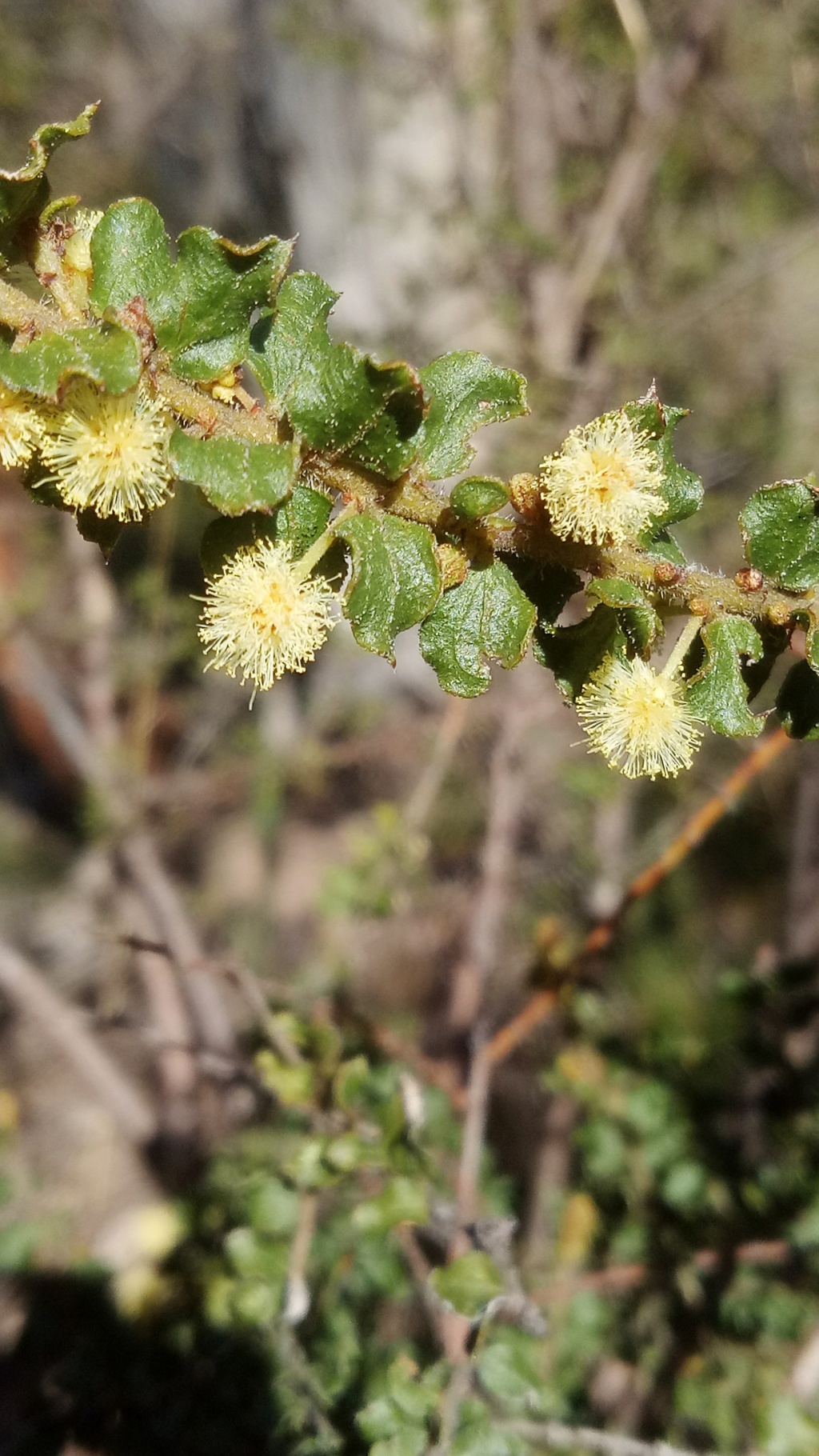Acacia daviesii
M.BartolomeShrub to 2.5 m high, root-suckering, stems erect, forming dense stands; branchlets usually pendulous, ribbed, shortly hispid, somewhat glandular. Phyllodes asymmetric, broadly elliptic to almost circular, 0.3–1.0 cm long, 2–8 mm wide, resinous, shortly stalked glandular hairs prominent on margins and veins, acute or obtuse, mucronate, margins undulate; veins 1 or 2, midrib usually more prominent; gland 0.4–1.2 mm above base. Peduncles solitary, 2.5–9 mm long, with shortly stalked glandular hairs, basal bract persistent; heads globular, 5–7 mm diam., 12–22-flowered, golden. Flowers 5-merious; sepals united in lower half. Pods oblong, to c. 3 cm long, c. 2–3 mm wide, coriaceous, moderately to densely covered with shortly stalked and subsessile glands; mature seeds not seen. Flowers Oct.
HNF. Known from only a handful of sites in dry open Eucalyptus woodland and forest near the Howqua River and Mt Timbertop, south east of Mansfield. Plants are only known to reproduce vegetatively, forming dense stands of 10’s to 100’s of stems. Isozyme analysis suggests that there may be as few as nine genotypes of this species (Bartolome et al. 2002).
 Spinning
SpinningBartolome, M.; Walsh, N.G.; James, E.A.; Ladiges, P.Y. (2002). A new, rare species of Acacia from north-eastern Victoria. Australian Systematic Botany 15: 465–475.

